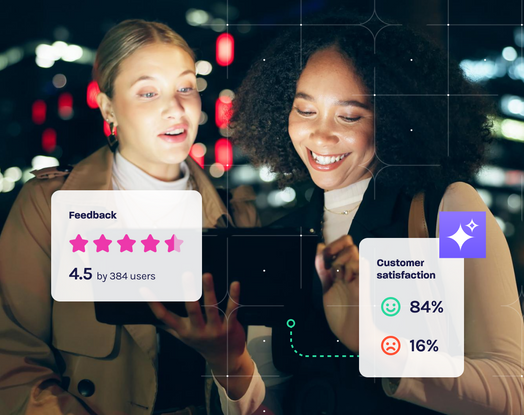
3 common UX mistakes and how to fix them
I’m endlessly surprised at the way users interact with websites and apps. It’s often not what was intended or expected, but that’s what makes user experience (UX) design so interesting. What may seem like an intuitive digital journey to the UX designer often turns out to be not so frictionless for the customer.
Poor UX doesn’t just prevent your customers and prospects from doing something they want on your website or app—there’s a high probability they won’t come back again for more. Let’s take a look at some top UX mistakes and how you can instead deliver a great experience that delights and satisfies your visitors.
Sub-par search
Search is one of the most critical functions that visitors use to find relevant information, products of interest or get help. It’s also the cause for visitors to leave your site 36% of the time due to poor UX. The failures cut both ways: offering too much information can result in visitors clicking on options that are unrelated to their search, making repeat searches, or getting frustrated when they’re unable to refine results. Conversely, visitors may not get any search “hits,” perhaps by mistyping, or there are no results. The net-net? Unhappy visitors will get frustrated and leave your website.
The fix:
- Allow visitors to refine results with filters to greatly reduce the number of options or consider providing a description of the content for quick scanning.
- When no relevant generic results can be returned, offer keyword-related terms based on the information the visitor has entered.
- A smart search features provide visitors with results as they type, so they don’t get search error messages
Enigmatic errors
We’ve all experienced this: You go through a website shopping process and reach the purchase page, and get the error, “Oops, something has gone wrong.” This is one of the worst disruptions to the visitor’s flow and tends to be most common on quote journeys and check-outs. It can also trip visitors up during search results or by clicking a CTA.
The biggest problem with these error pages is that they seldomly explain what the problem is and what to do next. There’s also not much encouragement to try and again, which forces visitors to drop off. This confusing experience leads to a whopping 62% average exit rate from a website.
The fix:
- Explain what the problem is, if possible, whether the user’s actions or a website issue, which can give the user reassurance that no payment was taken and clues about how to react to the issue (e.g., for payment page, confirm payment was not taken and provide a link for visitors to go back or re-attempt the process)
- Provide additional options to further assist users, such as live chat or a telephone number for immediate help
- Positively encourage the user to try the action again with a link to reload the page
Massive marquees
“Scrolling is fun,” said no one ever. But that’s what happens when your large promotional hero image takes up the entire viewport of the screen. Large images block access to primary calls to action and can create a false bottom—the sense that there’s nothing below the image. Typically seen on home pages, landing pages, and product pages, the visitor must continue scrolling down the page to discover key information, CTAs, and links. This experience results in 57% of users access content “below the fold.”
The fix:
- The most straightforward, easy remedy is to reduce the size of hero imagery. Apply a grid approach to improve the visibility of key messages
- Condense content where possible and give users the option to reveal elements they’re interested in, rather than showing everything by default
- Provide sticky in-page navigation for pages with lots of content
Get more UX tips and tricks
Want to learn about more UX show-stoppers? Register for DigitalWorld on May 25-26 and attend my session, Common UX Mistakes and How to Avoid Them.








